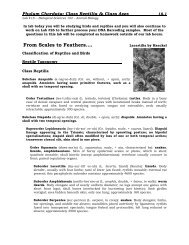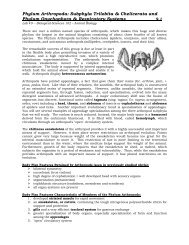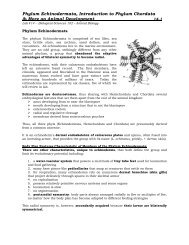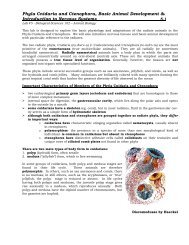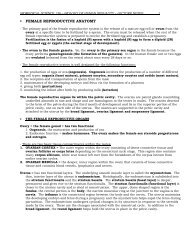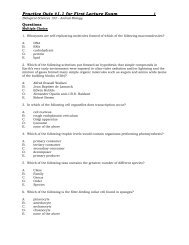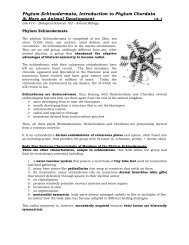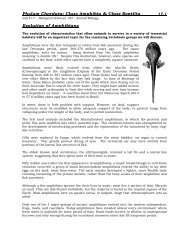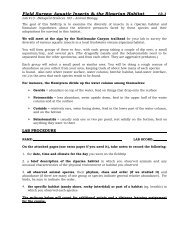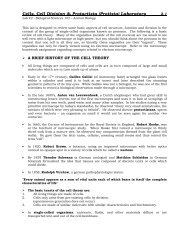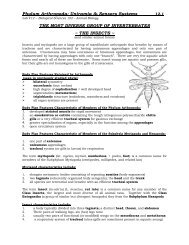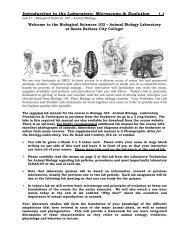Acoelomates: Phylum Platyhelminthes and Nemertea - Biosciweb.net
Acoelomates: Phylum Platyhelminthes and Nemertea - Biosciweb.net
Acoelomates: Phylum Platyhelminthes and Nemertea - Biosciweb.net
Create successful ePaper yourself
Turn your PDF publications into a flip-book with our unique Google optimized e-Paper software.
<strong>Acoelomates</strong>: <strong>Phylum</strong> <strong>Platyhelminthes</strong> <strong>and</strong> <strong>Nemertea</strong> <strong>and</strong><br />
Pseudocoelomates: Phyla Nematoda <strong>and</strong> Rotifera & Parasitism 6.16<br />
Lab #6 - Biological Sciences 102 – Animal Biology<br />
‣ Is the reproductive cycle of Turbatrix aceti as complex as that of Ascaris<br />
lumbricoides? Why, or why not do you think this is the case? Look this up in the text<br />
or on the Inter<strong>net</strong>.<br />
<strong>Phylum</strong> Rotifera (rotifers)<br />
‣ Observe the specimens <strong>and</strong>/or diagrams of the species listed below.<br />
‣ Record the descriptive information requested at the end of the lab for this species.<br />
‣ a rotifer (you will probably be unable to identify it to species, so just provide a<br />
common name)<br />
‣ Examine the culture of rotifers. Examine a sample on a slide with Proto-Slo under<br />
the compound microscope.<br />
‣ Draw <strong>and</strong> CLEARLY label the following rotifer structures, otherwise be able to<br />
identify the following structures:<br />
‣ corona<br />
‣ mastax (jaw apparatus)<br />
‣ trochus (ciliated whorls)<br />
‣ stomach<br />
‣ intestine<br />
‣ mouth<br />
‣ foot <strong>and</strong> toes (for anchoring)<br />
‣ cloacal bladder (as visible)<br />
‣ pedal gl<strong>and</strong>s (as visible)<br />
‣ eyespots near brain (as visible)



